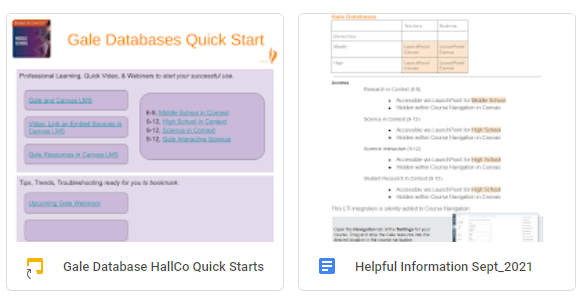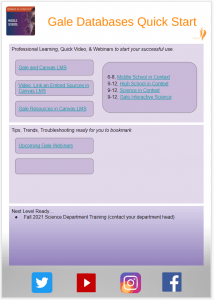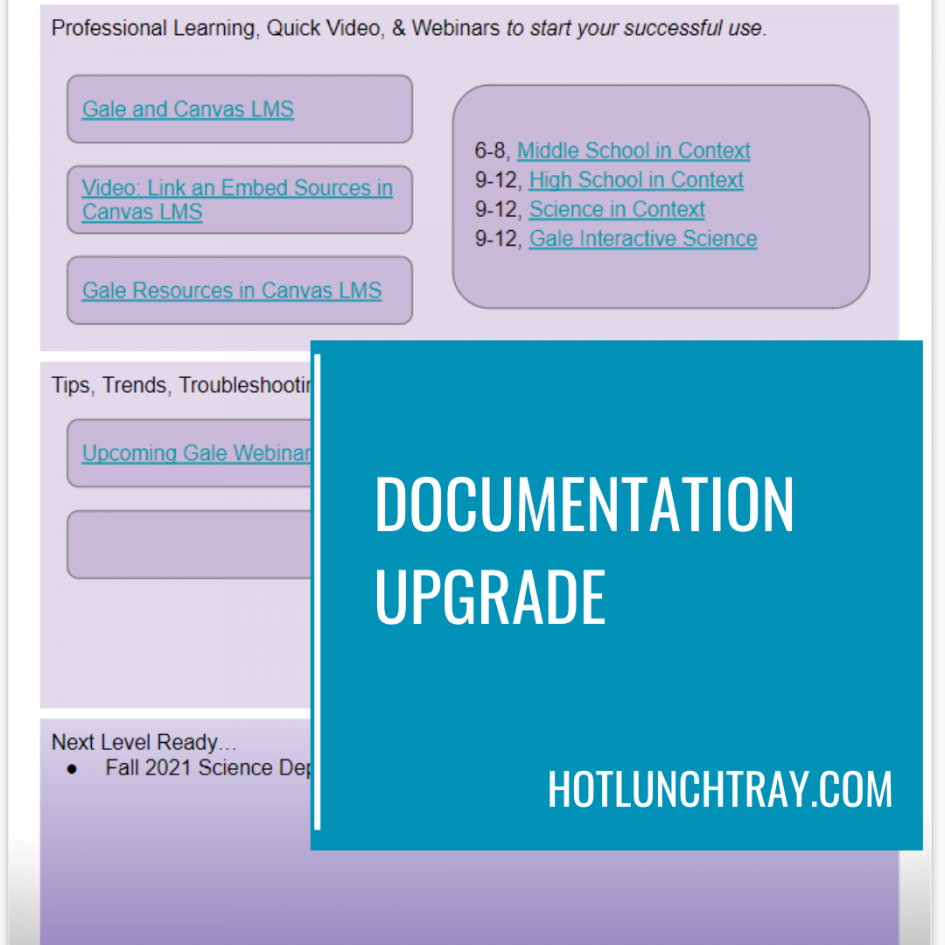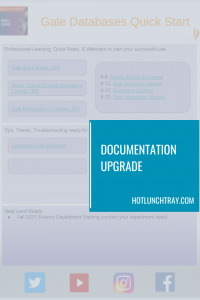Documentation Upgrade
We should acknowledge that an undercurrent of the pandemic in K-12 was stalled support. I find myself updating documentation and am startled by the significance of the changes. The scheduled documentation upgrade was often the last task to be completed (if it was completed). With a constant flow of urgent and important issues continually arising it was no wonder. However, now that some balance has been found in school technology it is time to consider a documentation upgrade.

Documentation Upgrade –
Right: 18 month-old documentation
Left: updated documentation
A real pandemic loss was thorough documentation in K-12. While we answered the requesters for live video conference meetings and screen recordings, we reached a wide audience momentarily and ignored different learning modalities and opportunities over time. How many times were you asked for the recording and how many views do you see on those uploaded YouTube videos? Sigh.
Cadence Update
The initial stages of triage for pandemic support were live meetings and video recordings. Many video meetings. And too many were recorded.
But as educators realized disseminating information this way was not efficient, we tried adjusting the message and audience size. So we offered multiple sessions of the same content to alleviate pressure to “get it all” the first time. Truncating the sessions also helped us chunk the content smaller. Over time these tactics proved more helpful than large, long meetings. This learning curve was when K-12 started to realize how micro-learning helps people learn.
And now roles supporting teachers are returning to a (maybe new) cadence of support documentation. I include a pretty typical example of my 18-month example lag in updating documentation since the onset of the pandemic. The good news is that documentation upgrades can have a huge and noticeable impact on the end-users of products.
The time is now to refresh our support documentation. Unless we return to a distributed model of updating of support documentation the high point of our content may become dated, pandemic-era documentation. That makes this an important task to re-incorporate into our daily tasks.
Usability Upgrade
The pandemic has taught us that to get updates to learners we needed more frequent, smaller doses of training to teachers. The content can also be packaged on the document. The segmenting provides meaning based on the placement of the information. While the documentation upgrade is still on a shared Google item (was doc is now a slide), the formatting has been upgraded.
Those in technical or instructional support roles absorbed more management when the content was made smaller. The content drip rolled back on the support teachers more to manage micro-doses of support over time or just-in-time. Teachers are now used to that management taking place before information or training reaches them; teachers may prefer this shared load of managing new information.
Documentation Organization
I placed the most common questions with the broadest appeal at the top of the documentation. I worked down to less frequently asked questions at the bottom, sometimes more advanced information.
Vendor social media accounts are linked at the bottom of all documentation. They are the best advertisers of their content and processes, let them keep their customers up to speed with outages, updates, or tips/tricks with their specialty products.
Grab your own copy of this Quick Starts format.
Future Documentation Upgrades
Just like teaching learners to go to the source of information via social media, I hope to highlight the empowerment of status pages. Whether an organization’s status page or individual vendor’s status pages, there is power in being able to access status independent of a gatekeeper.
Release notes for larger programs may also find a home on documentation for larger products.
I also plan to add dates after updates or version numbers. I used this inconsistently in the previous version, but when I noted it during subsequent revisions it helped me to consider how many new updates might have occurred. This has not yet been applied across all documentation, but should be.

Full view of updated documentation upgrade







1 Pingback